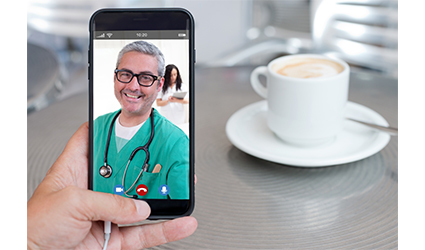A Boon to Chronic Disease Patients and Doctors
August 30, 2018
Source: The Verdict
 934
934

Availability of a medical professional 24x7 to monitor a patient suffering from diabetes and cardiac conditions is impossible outside a hospital setting. This is where remote monitoring comes to the rescue. Patients suffering from chronic illnesses such as these want regular medical attention and hence, the demand for remote health monitoring systems is on the rise.
Remote patient monitoring uses technology to check on patients who are in the comfort of their homes or busy at work. It intends to raise the quality of life of patients suffering from longstanding illnesses and is hence, emerging as the most sought-after service by patients.
To make it work, remote health monitoring requires the amalgamation of different linked technologies. For instance, a tracker which computes certain physiological variables and sends it to the patient and the doctor simultaneously along with software that stores and analyses relevant data and suggests management protocols for the disease in question is needed. Mobile apps with such functions are readily accepted by the general population.
A number of conditions can be managed with this method, however, diabetes and blood pressure along with weight monitoring is most commonly looked for.
Every coin has two sides though and this technology is still marred with inconsistencies in patient inputs, feasibility in rural regions and the safeguarding of data from potential hackers. It does, however, make the lives of patients much easier as they have a constant eye upon their changing health condition and therefore, they, along with a medical professional can prevent any disease complication.
By DduRead more on
- Things to Know before Buying Newborn Baby Incubators March 31, 2022
- Highly Resistant Food Poisoning Bug Responds to Antibiotics September 6, 2018
- Smartphone Based Diagnosis to Identify Mosquitoes Transmitting Infection September 5, 2018
- 3 Natural Plant Extracts Manufacturers on Drugdu.com September 4, 2018
- Shenzhen Chuanggan – Health Assessment Facility Supplier September 4, 2018
your submission has already been received.
OK
Subscribe
Please enter a valid Email address!
Submit
The most relevant industry news & insight will be sent to you every two weeks.



